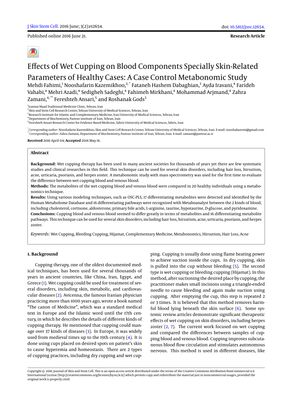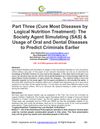Effects of Wet Cupping on Blood Components, Especially Skin-Related Parameters of Healthy Cases: A Case Control Metabonomic Study
June 2016
in “
Journal of skin and stem cell
”

TLDR Wet cupping blood has different components than regular venous blood, which might affect skin disorder treatments.
The study investigated the differences in metabolites between wet cupping blood and venous blood in 20 healthy individuals using a metabonomics approach with mass spectrometry. The results identified 17 differentiating metabolites and 16 differentiating pathways, including those related to cholesterol, cortisone, aldosterone, primary bile acids, L-arginine, taurine, hypotaurine, D-glucose, and pyridoxamine. The findings suggest that there are significant differences in the composition of blood obtained through wet cupping compared to venous blood, which may have implications for the treatment of various skin disorders such as hair loss, hirsutism, acne, urticaria, psoriasis, and herpes zoster.



